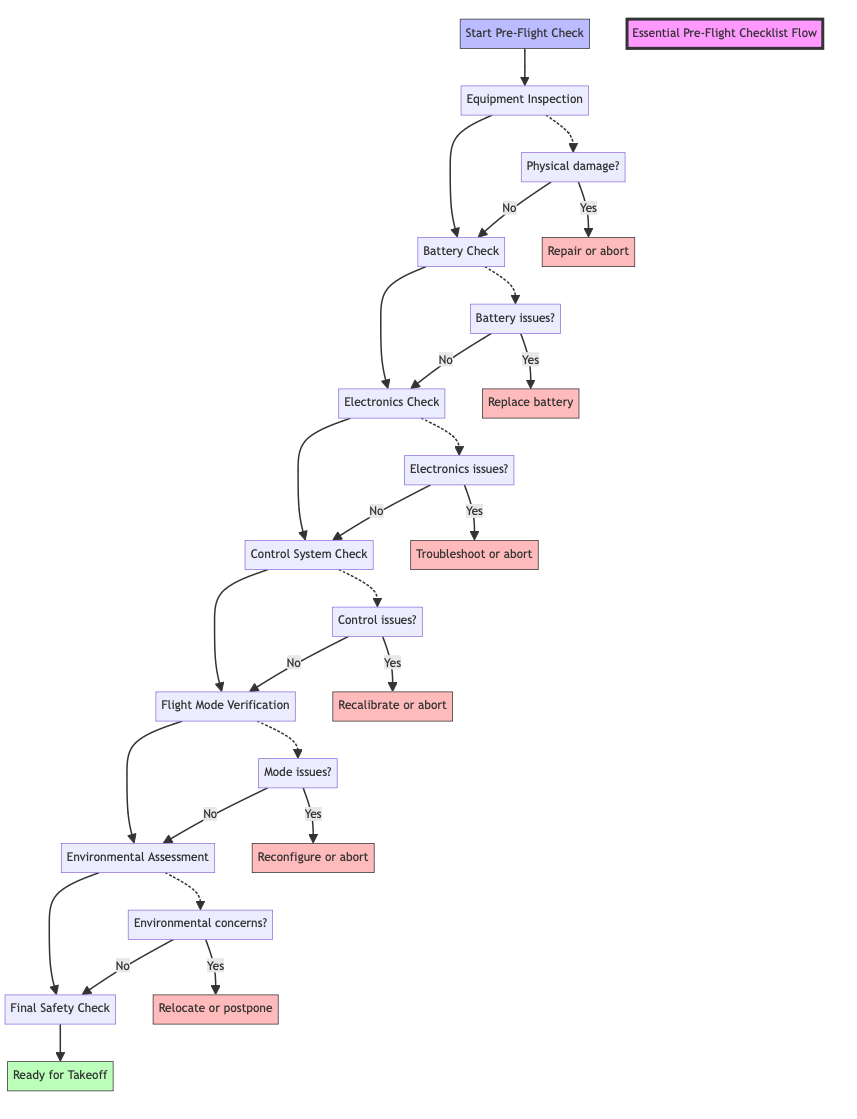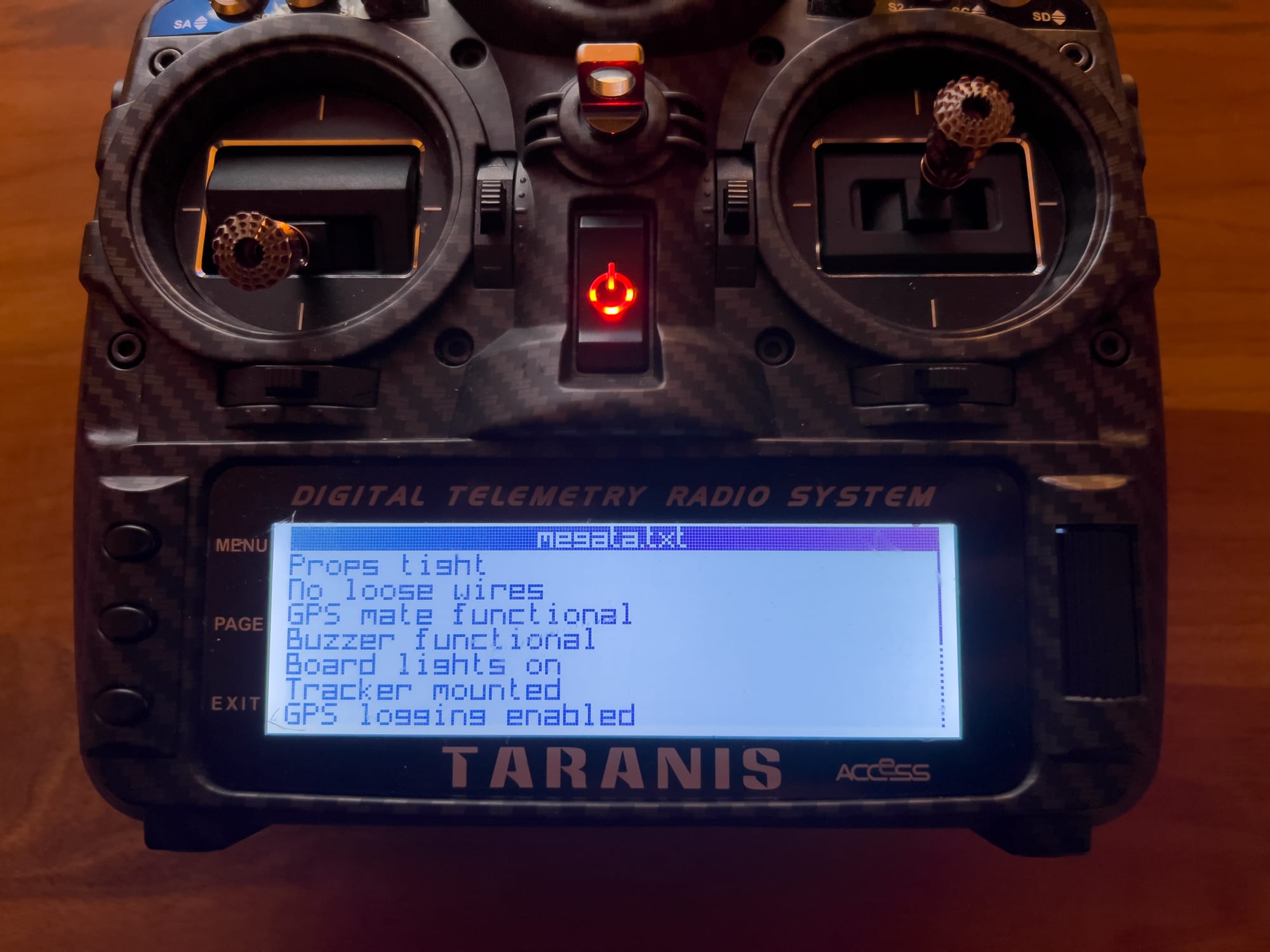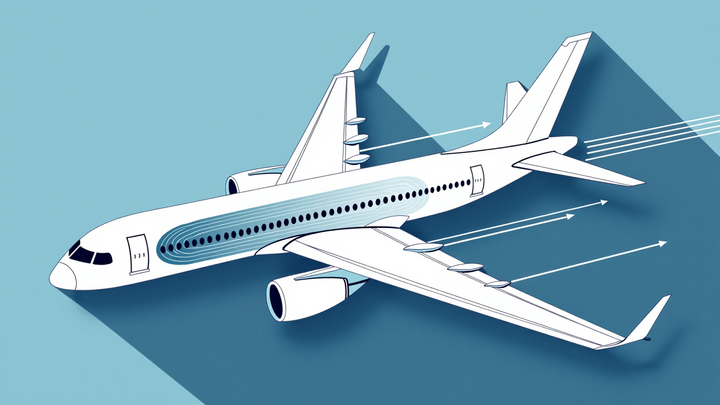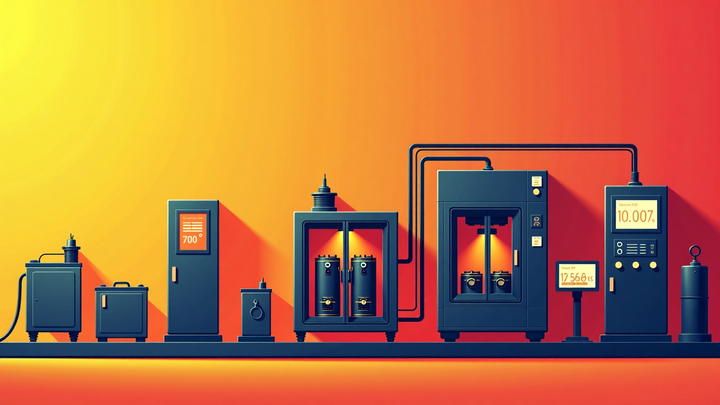Drone Pre-Flight Checklists

After thousands of flights across various drone platforms, I've learned that a thorough pre-flight checklist is the single most important safety practice in drone operations. This guide provides a comprehensive set of checklists for different drone types and flying scenarios, based on my experience and industry best practices.
Introduction: Why Pre-Flight Checks Matter
My approach to drone safety was profoundly influenced by Atul Gawande's book "The Checklist Manifesto," which demonstrates how simple checklists have transformed high-risk fields like aviation and surgery. The book's central insight—that checklists help manage complexity and prevent failures even among experts—applies perfectly to drone operations. Just as airline pilots with thousands of flight hours still use pre-flight checklists, experienced drone pilots benefit from systematic verification procedures.
Pre-flight checks serve several critical purposes:
- Safety: Identify potential issues before they become dangerous
- Equipment Protection: Prevent damage to expensive equipment
- Legal Compliance: Meet regulatory requirements for safe operation
- Mission Success: Ensure all systems are ready for the intended flight
- Efficiency: Avoid wasted time and battery power due to overlooked issues
I've witnessed countless drone incidents that could have been prevented with proper pre-flight checks. From loose props causing vibration damage to GPS issues leading to flyaways, many problems are easily caught before takeoff if you know what to look for.
The Essential Pre-Flight Checklist
This core checklist applies to virtually all drone types. I recommend going through these checks in sequence before every flight, even with familiar equipment.

1. Equipment Inspection
| Component | Check | Common Issues |
|---|---|---|
| Frame | Inspect for cracks, loose screws, or damage | Hairline cracks after crashes, loose screws from vibration |
| Props | Check for chips, cracks, or deformation | Micro-fractures from previous landings, warping from heat |
| Motors | Spin by hand, check for smooth rotation | Bent shafts, debris in bell, loose bearings |
| Antennas | Verify all antennas are secure and properly oriented | Loose connections, damaged elements, improper positioning |
| Gimbal (if applicable) | Check for free movement and proper balance | Obstructions, calibration drift, axis binding |
| Camera/Sensors | Clean lenses, check mounts | Fingerprints on lens, loose mounts, misalignment |
| Landing Gear | Verify stability and proper deployment | Loose legs, uneven stance, damaged shock absorption |
I always pay special attention to props and frame integrity, as these are common failure points that can lead to catastrophic results in flight.
2. Battery Check
| Check | Procedure | Warning Signs |
|---|---|---|
| Physical Condition | Inspect for swelling, damage, or leakage | Any deformation, punctures, or sticky residue |
| Charge Level | Verify sufficient charge for planned flight (plus reserve) | Below 80% for new flight, voltage sag under load |
| Balance | Check cell balance (if using smart battery or checker) | Cell voltage difference >0.1V |
| Temperature | Ensure battery is at appropriate temperature | Too cold (<10°C) or too hot (>40°C) |
| Secure Mounting | Verify battery is properly secured | Loose straps, shifting position |
| Connector Quality | Check for corrosion, damage, or wear | Discoloration, pitting, resistance when connecting |
I've found that battery issues are among the most common causes of in-flight failures. I never fly with a battery showing any signs of physical damage or significant imbalance.
3. Electronics Check
| System | Check | Notes |
|---|---|---|
| Power Up Sequence | Power on in correct sequence, observe startup behavior | Note any unusual LED patterns or sounds |
| Flight Controller | Verify proper initialization and sensor calibration | Check for error messages or unusual behavior |
| GPS (if applicable) | Confirm adequate satellite lock and accuracy | Minimum 10 satellites for critical missions |
| Compass | Verify calibration and lack of interference | Recalibrate if showing erratic behavior |
| Sensors | Confirm all sensors are functioning properly | Check barometer, optical flow, obstacle avoidance as applicable |
| Video System | Verify clean video feed with proper range | Check for interference, static, or range issues |
| Recording Media | Confirm sufficient storage space | Format media if needed |
For critical flights, I always perform a full sensor check including compass calibration, even if the drone has been working perfectly in previous flights.
4. Control System Check
| Check | Procedure | What to Look For |
|---|---|---|
| Transmitter | Power on, check battery level, switch positions | Low battery, incorrect switch settings |
| Binding | Verify solid connection between transmitter and receiver | Signal strength indicator, no failsafe warnings |
| Control Surfaces | Move all sticks, verify correct and smooth response | Delayed response, jittering, incorrect direction |
| Failsafe | Test failsafe activation (where safe to do so) | Proper RTH or other failsafe behavior |
| Range Check | Perform range check if required | Signal degradation within expected parameters |
| Flight Modes | Cycle through flight modes, verify proper indication | Mode switch response, correct mode indication |
I always perform a full stick movement check before every flight, watching for any unexpected behavior in the drone's response.
5. Flight Mode Verification
| Mode | Verification | Common Issues |
|---|---|---|
| Manual/Acro | Verify stick response is direct and precise | Drift, unexpected assistance |
| Stabilized | Check self-leveling and stability | Drift, oscillations, over/under-correction |
| Position Hold | Verify stable holding of position (if applicable) | Drift, hunting behavior, GPS glitches |
| Return-to-Home | Confirm home point is set correctly | Incorrect home point, inadequate RTH altitude |
| Autonomous Modes | Verify mission planning and parameters | Waypoint accuracy, speed settings, action triggers |
For any autonomous or GPS-dependent flight, I always verify the home point is correctly set and that the RTH function is working properly before proceeding with the flight.
6. Environmental Assessment
| Factor | Check | Considerations |
|---|---|---|
| Weather | Check current and forecast conditions | Wind speed/direction, precipitation, visibility |
| Airspace | Verify legal status of airspace | Restrictions, NOTAMs, temporary flight restrictions |
| Obstacles | Identify trees, buildings, power lines | Height, proximity, potential for signal blockage |
| People | Check for uninvolved persons in area | Privacy concerns, safety buffer zones |
| Interference | Assess potential RF or magnetic interference | Power lines, radio towers, large metal structures |
| Landing Zone | Verify suitable takeoff/landing area | Size, levelness, obstacles, visibility |
| Sun Position | Note sun position relative to flight path | Avoid flying directly into sun, consider glare on screen |
I've aborted many flights due to environmental factors, particularly unexpected wind or the presence of people in the flight area. It's always better to postpone than to risk an incident.
7. Final Safety Check
| Check | Procedure | Purpose |
|---|---|---|
| Area Clear | Ensure immediate area is clear of people and obstacles | Prevent injury or damage during takeoff |
| Notifications | Inform any necessary parties of flight intentions | Coordination with observers, property owners, etc. |
| Emergency Plan | Review emergency procedures and landing zones | Preparation for unexpected situations |
| Pilot Readiness | Self-assessment of focus and capability | Avoid flying when tired, distracted, or impaired |
| Equipment Positioning | Ensure controller, FPV equipment, etc. are properly positioned | Prevent fumbling or dropping equipment during flight |
I always take a moment to mentally review emergency procedures before takeoff, especially when flying in a new location.
Specialized Checklists by Drone Type
Different types of drones require additional specific checks. Add these to your core checklist based on your equipment.
FPV Freestyle/Racing Drones
| Component | Check | Notes |
|---|---|---|
| Props | Verify correct rotation direction for each motor | Common to install incorrectly after maintenance |
| VTX Settings | Confirm legal power settings and correct frequency | Avoid illegal power levels or frequency conflicts |
| Turtle Mode | Test flip-over capability if equipped | Ensure motors can provide enough torque |
| Rates | Verify rate settings match your expectations | Prevent surprises in stick response |
| Goggles | Check fit, focus, battery level | Ensure comfortable viewing for duration of flight |
| DVR | Start recording if desired | Prevent missing footage of flights |
| Capacitor | Verify capacitor is secure and properly connected | Prevent power system noise and voltage spikes |
For freestyle drones, I pay special attention to prop security and direction, as these are often changed between flights and can cause immediate crashes if incorrect.
Long-Range Drones
| Component | Check | Notes |
|---|---|---|
| Range Link | Verify control link range and reliability | Test RSSI at distance before critical flights |
| GPS Redundancy | Check backup GPS systems if equipped | Verify both primary and backup systems |
| Battery Endurance | Calculate flight time with safe margins | Plan for 30% reserve minimum |
| Telemetry | Verify all telemetry data is accurate and transmitting | Battery voltage, current, GPS coordinates, altitude |
| Return Parameters | Check RTH altitude, speed, and behavior | Ensure RTH altitude clears all terrain and obstacles |
| Autonomous Capability | Verify waypoint navigation if planned | Test mission at close range first |
| Extended Visual Observers | Brief and position observers if using EVLOS | Ensure clear communication protocols |
For long-range operations, I always conduct a thorough range test of both control and video systems before attempting any significant distance flight.
Camera/Cinematic Drones
| Component | Check | Notes |
|---|---|---|
| Gimbal | Perform full calibration and movement test | Check all axes for smooth motion |
| ND Filters | Select and secure appropriate filters | Verify clean, scratch-free glass |
| Camera Settings | Confirm proper exposure, frame rate, resolution | Match settings to lighting conditions and desired outcome |
| Focus | Check focus mechanism and settings | Ensure proper focus for intended subject |
| Media | Verify sufficient storage and proper formatting | Calculate required space for planned shooting |
| Noise Isolation | Check vibration dampening systems | Ensure clean footage without jello effect |
| Intelligent Flight Modes | Test tracking, orbit, or other special modes | Verify proper function before relying on them |
For cinematic drones, I always record a short test clip and review it before proceeding with the actual shoot to catch any camera or gimbal issues.
Professional/Commercial Operations
| Component | Check | Notes |
|---|---|---|
| Documentation | Verify all required licenses and permits | Keep copies accessible during operation |
| Insurance | Confirm insurance coverage for specific operation | Note any exclusions or limitations |
| Mission Plan | Review detailed flight plan with all stakeholders | Ensure everyone understands objectives and procedures |
| Risk Assessment | Complete formal risk assessment if required | Document identified risks and mitigations |
| Backup Equipment | Verify backup drone/batteries are ready if needed | Prepare for equipment failure during critical operations |
| Client Requirements | Review specific deliverables and requirements | Ensure capability to meet all technical specifications |
| Public Management | Establish perimeter control if necessary | Assign personnel to manage public if operating in accessible areas |
For commercial operations, I maintain a formal checklist with sign-offs for each section to provide documentation of proper procedures in case of incidents.
Environmental and Seasonal Considerations
Add these checks based on your specific flying conditions.
Winter/Cold Weather Operations
| Check | Procedure | Purpose |
|---|---|---|
| Battery Warming | Pre-warm batteries to optimal temperature | Ensure full capacity and performance |
| Condensation | Check for moisture when moving from cold to warm environments | Prevent electrical shorts |
| Snow/Ice | Clear any snow or ice from aircraft | Prevent weight imbalance and motor strain |
| Hand Protection | Prepare gloves that allow control operation | Maintain dexterity while protecting from cold |
| Landing Zone | Identify suitable landing surface in snow | Avoid sinking or tipping on landing |
I always keep my batteries in an insulated bag when flying in cold weather and monitor voltage more carefully as performance can degrade rapidly.
Summer/Hot Weather Operations
| Check | Procedure | Purpose |
|---|---|---|
| Overheating | Monitor equipment temperature | Prevent thermal shutdown |
| Sun Exposure | Position equipment out of direct sunlight when not in use | Prevent overheating of batteries and electronics |
| Screen Visibility | Adjust screen brightness or use sun hood | Ensure visibility of control screens |
| Hydration | Prepare water for pilot and crew | Maintain focus and performance in heat |
| Thermal Currents | Be aware of rising thermal air currents | Anticipate unexpected lift or turbulence |
When flying in hot conditions, I pay special attention to battery temperature both before and after flights, as heat can significantly reduce battery life and increase fire risk.
Coastal/Marine Operations
| Check | Procedure | Purpose |
|---|---|---|
| Salt Protection | Apply conformal coating if operating near saltwater | Prevent corrosion from salt spray |
| Wind Assessment | Check for onshore/offshore winds and strength | Coastal areas often have stronger, gustier winds |
| Emergency Landing | Identify land-based emergency landing zones | Avoid water landings if possible |
| Visibility | Check for fog, mist, or haze | Coastal weather can change rapidly |
| Corrosion | Inspect for any signs of corrosion on previous coastal flights | Catch early signs of salt damage |
After flying in coastal environments, I always wipe down my equipment with a slightly damp cloth followed by a dry cloth to remove any salt residue.
High-Altitude Operations
| Check | Procedure | Purpose |
|---|---|---|
| Prop Efficiency | Be aware of reduced prop efficiency at altitude | Expect reduced lift and battery life |
| Weather | Check mountain-specific weather forecasts | Mountain weather changes rapidly |
| Landing Zones | Identify multiple emergency landing options | Limited flat areas in mountainous terrain |
| Signal Propagation | Test signal strength in mountainous terrain | Mountains can block signals |
| Altitude Limits | Verify drone's maximum operating altitude | Some drones have firmware altitude limitations |
When flying at high altitudes, I always maintain a more conservative battery reserve as the thinner air reduces efficiency and can lead to shorter flight times.
Pre-Flight Checklist Templates
Below are printable checklist templates you can use for different types of operations. I recommend laminating these and using a dry-erase marker to check off items for each flight.
Standard FPV Drone Checklist
- [ ] Frame & Hardware
- [ ] Frame integrity checked
- [ ] All screws tight
- [ ] No visible damage
- [ ] Power System
- [ ] Battery physical condition good
- [ ] Battery charged (voltage: _____ V)
- [ ] Battery secured
- [ ] Power connections secure
- [ ] Propulsion
- [ ] Props undamaged
- [ ] Props secure
- [ ] Motors spin freely
- [ ] Motor direction correct
- [ ] Electronics
- [ ] FC responds normally
- [ ] ESCs initialized
- [ ] Video system functioning
- [ ] Control receiver linked
- [ ] Control System
- [ ] Transmitter battery good
- [ ] Control response correct
- [ ] Failsafe configured
- [ ] Flight modes verified
- [ ] Environment
- [ ] Weather suitable
- [ ] Flying area clear
- [ ] Legal to fly here
- [ ] Takeoff/landing area suitable
- [ ] Final Checks
- [ ] Pilot ready and focused
- [ ] Emergency procedures reviewed
- [ ] Observers briefed (if applicable)
- [ ] Recording started (if desired)
Long-Range Operations Checklist
- [ ] Standard Checks (Complete basic checklist first)
- [ ] Navigation Systems
- [ ] GPS lock acquired (Satellites: _____)
- [ ] Home point set and verified
- [ ] Compass calibrated
- [ ] RTH altitude set appropriately (_____ m)
- [ ] Range Systems
- [ ] Control link range tested
- [ ] Video link range tested
- [ ] Telemetry functioning
- [ ] Antenna positions optimized
- [ ] Flight Planning
- [ ] Route planned and reviewed
- [ ] Altitude plan accounts for terrain
- [ ] Emergency landing zones identified
- [ ] Battery capacity sufficient (with 30% reserve)
- [ ] Extended Operations
- [ ] Observers in position and briefed
- [ ] Communication systems tested
- [ ] Airspace notifications made if required
- [ ] Weather checked along entire route
Camera Drone Checklist
- [ ] Standard Checks (Complete basic checklist first)
- [ ] Camera System
- [ ] SD card inserted and formatted
- [ ] Camera settings configured
- [ ] Lens clean
- [ ] ND filter installed if needed
- [ ] Gimbal System
- [ ] Gimbal moves freely
- [ ] Gimbal calibrated
- [ ] Gimbal modes tested
- [ ] Damping system functioning
- [ ] Shot Planning
- [ ] Shot sequence planned
- [ ] Test shots reviewed
- [ ] Exposure settings appropriate
- [ ] Focus settings verified
- [ ] Media Management
- [ ] Sufficient storage space
- [ ] Backup storage available
- [ ] File naming/organization planned
- [ ] Monitor/display functioning
Post-Flight Checklist
Developing a post-flight routine is just as important as pre-flight checks for maintaining your equipment and preparing for the next flight.
| Check | Procedure | Purpose |
|---|---|---|
| Equipment Inspection | Check for any damage or wear from the flight | Identify issues while fresh in mind |
| Battery Management | Check battery temperature and voltage | Identify potential battery issues |
| Data Download | Transfer and backup any recorded media | Prevent data loss |
| Flight Log Review | Check flight logs for any anomalies | Identify potential issues for next flight |
| Cleaning | Remove dust, dirt, grass, etc. | Prevent buildup of debris in motors or electronics |
| Storage Preparation | Prepare drone for proper storage | Protect equipment between flights |
| Incident Documentation | Document any issues or close calls | Learn from experience |
I always take a few minutes after flying to inspect my equipment while any issues from the flight are still fresh in my mind. This has helped me catch developing problems before they become serious.
Digital Checklist Apps and Tools
While paper checklists are reliable, several digital options can enhance your pre-flight process. A simple note taking app will most do most of the job but here are a few specialised apps that I can recommend:


Many RC controllers can also display checklists.

However, I always recommend having a backup paper checklist in case of device failure or battery issues.
Pro Tips for Effective Pre-Flight Checks
After thousands of flights, here are some insights I've gained about the pre-flight process:
- Develop a Consistent Routine: Follow the same sequence every time to avoid missing steps.
- Verbalize Checks: Say each check out loud, especially when distracted or in noisy environments.
- Two-Person System: When possible, have another person read the checklist while you perform the checks.
- Take Your Time: Rushing pre-flight checks is a common factor in incidents.
- Separate Preparation from Operation: Complete all checks before moving to the flying mindset.
- Trust Your Instincts: If something doesn't feel right, it probably isn't—postpone the flight.
- Regular Practice: Practice emergency procedures regularly so they become automatic.
- Continuous Improvement: Update your checklist based on incidents or near-misses.
- Context Matters: Adapt your checklist to the specific environment and mission.
- Avoid Complacency: Experienced pilots are sometimes more prone to skipping checks.
FAQ: Common Questions About Pre-Flight Checklists
How long should a pre-flight check take?
A thorough pre-flight check typically takes 5-10 minutes for familiar equipment in routine conditions. For new equipment, complex missions, or challenging environments, allow 15-20 minutes. Never rush this process—the few minutes saved aren't worth the potential consequences.
Do I really need to do a full check before every flight?
Yes, even if you're doing multiple flights in one session. However, you can scale the depth of checks between flights. After the initial comprehensive check, subsequent checks in the same session can focus on battery condition, prop integrity, and any systems that might have been affected by the previous flight.
What's the single most important check for safety?
While all checks are important, prop security and condition is critical. Loose or damaged props can cause immediate catastrophic failures, leading to crashes or injuries. Always physically check each prop before flight.
How do I adapt these checklists for automated or commercial operations?
For commercial operations, formalize these checklists into your operations manual and consider adding sign-off procedures for accountability. For automated operations, add specific checks for mission planning software, geofencing, and automated flight parameters.
What should I do if I find an issue during pre-flight checks?
Always resolve issues before flying. If you can't resolve them safely in the field, postpone the flight. Develop a "no-go" criteria list for your specific equipment to help make these decisions objectively rather than emotionally.
How often should I update my checklist?
Review and update your checklist:
- After any incident or near-miss
- When adding new equipment
- When changing flying environments
- At least every 6 months as a regular practice
Should I do pre-flight checks for toy drones too?
Yes, though they can be simplified. Even with inexpensive drones, basic checks of battery, props, and controls can prevent crashes and extend the life of your equipment. It also builds good habits for when you upgrade to more capable aircraft.
Conclusion
A thorough pre-flight checklist is the foundation of safe and successful drone operations. While it might seem tedious, especially for experienced pilots, this systematic approach has prevented countless accidents and equipment losses.
I've found that the discipline of following a checklist actually enhances my enjoyment of flying by reducing stress and uncertainty. Knowing that I've verified all critical systems allows me to focus fully on the creative or technical aspects of the flight rather than worrying about potential issues.
Remember that checklists should evolve with your experience and equipment. Customize these templates to your specific needs, and don't hesitate to add items based on your own experiences or close calls.
Safe flying!
References and Further Reading
Internal References
- Drone Regulations Worldwide: A Guide to Flying Legally
- Swiss Drone Regulations
- Long-Range Flying and Extended FPV Drone Operations





Comments ()